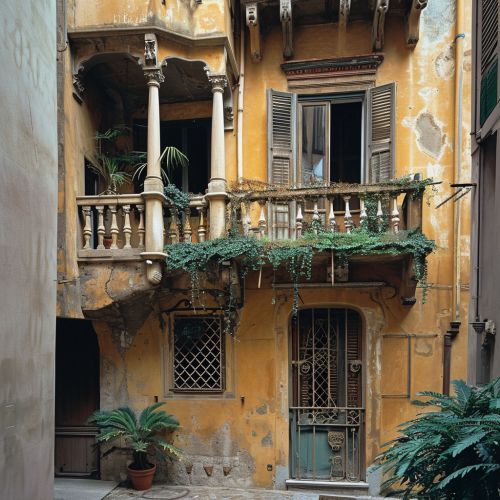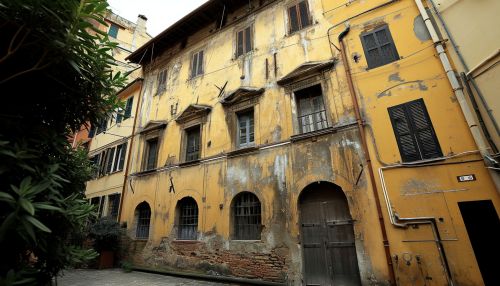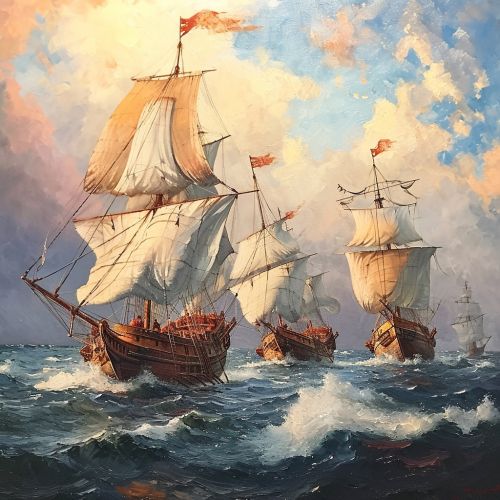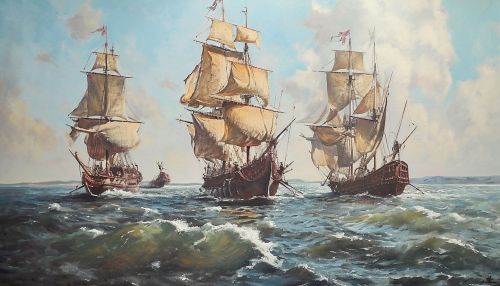Christopher Columbus
Early Life
Christopher Columbus was born in 1451 in the Republic of Genoa, one of the major seafaring cities in Italy. His father, Domenico Colombo, was a middle-class wool weaver who also owned a cheese stand where Columbus worked as a young boy. His mother, Susanna Fontanarossa, was the daughter of a wool merchant. Columbus had three brothers—Bartolomeo, Giovanni Pellegrino, and Giacomo—and a sister named Bianchinetta.


Columbus was largely self-educated. He learned to read and write in Latin, the language of the Church and of scholarship. He also studied the works of Ptolemy, Marco Polo, and other geographers, developing a curiosity about the world beyond Europe.
Maritime Career
Columbus began his maritime career at a young age, starting as a sailor on merchant ships and working his way up to become a master mariner. He made his first sea voyage in the service of René of Anjou, fighting against the Kingdom of Aragon. In 1476, Columbus survived a shipwreck off the coast of Portugal and swam to shore. He settled in Lisbon, where his brother Bartolomeo was working as a cartographer. In Lisbon, Columbus married Filipa Moniz Perestrelo, the daughter of a Portuguese nobleman. They had one son, Diego.
Columbus's maritime voyages took him to the coasts of Iceland, Ireland, and Africa. He became convinced that there was a westward sea route to Asia. This belief was based on his reading of the works of Ptolemy, Marinus of Tyre, and other geographers, as well as his own sailing experience.
The Plan for a Westward Voyage to Asia
In the late 15th century, the overland trade routes to Asia were controlled by the Ottoman Empire, making them difficult and dangerous for Europeans to use. Columbus proposed a plan to reach Asia by sailing westward. This plan was based on the belief that the Earth was much smaller than it is, and that Asia extended much further east than it does.
Columbus sought support for his plan from several European monarchs, but it was consistently rejected. The experts consulted by the monarchs believed, correctly, that Columbus had greatly underestimated the distance to Asia. They also believed, incorrectly, that the ocean west of Europe was uncrossable.
The Voyage of 1492
In 1492, Columbus finally received the support of the Catholic Monarchs of Spain, Ferdinand II and Isabella I. They provided Columbus with three ships—the Santa Maria, the Pinta, and the Niña—and a crew of about 90 men.


Columbus set sail from Palos de la Frontera, Spain, on August 3, 1492. After a stop in the Canary Islands, the expedition sailed westward into the open ocean. On October 12, 1492, land was sighted. It was an island in the present-day Bahamas, which Columbus named San Salvador.
Columbus believed that he had reached the East Indies, the islands off the southeast coast of Asia. He called the indigenous people he encountered "Indians," a term that has been used ever since to refer to the indigenous peoples of the Americas.
Later Voyages and Death
Columbus made three more voyages to the Americas. On his second voyage, in 1493, he established a colony on the island of Hispaniola, now divided between the Dominican Republic and Haiti. On his third voyage, in 1498, he reached the coast of South America. On his fourth and final voyage, in 1502-1504, he explored the coast of Central America.
Columbus died in 1506 in Valladolid, Spain. He was still convinced that he had found a westward sea route to Asia. It was not until the voyage of Ferdinand Magellan in 1519-1522 that it was proven that the Americas were a separate continent.
Legacy
The voyages of Columbus marked the beginning of the era of European exploration and colonization of the Americas. They also brought about the exchange of plants, animals, and diseases between the Old World and the New, known as the Columbian Exchange.
Columbus is a controversial figure today. He is often credited with "discovering" the Americas, but this ignores the fact that the continents were already inhabited by millions of indigenous people. Columbus's voyages led to the widespread death and displacement of indigenous peoples, primarily through disease and violence.
